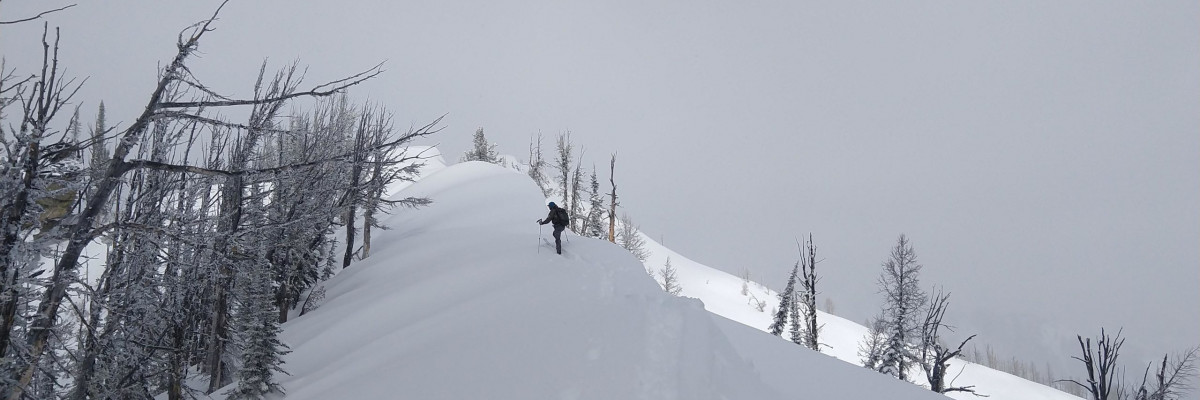The avalanche danger in the west central Montana backcountry is moderate in wind loaded terrain and low in all other terrain.
Good morning, this is Jeff Carty with the West Central Montana avalanche advisory for March 28, 2020. Today’s advisory is sponsored by onX Maps. This advisory does not apply to operating ski areas, expires at midnight tonight, and is the sole responsibility of the U.S. Forest Service.
Weather and Snowpack
Mountain temperatures range from 18º to 26º and are forecast to reach into the low 40s above 6000’ today. Winds are forecast to be low with moderate to strong gusts out of the west.
In the last 48 hours, we’ve received an average of 0.5″ of snow water equivalent (SWE) or about 5″ inches of new snow throughout the forecast area. The northern portion of the forecast area received a bit more while the southern Bitterroot received less.
The snow has been trickling in and slowly piling up over the past week. Yesterday at the Gash we found 6-8” of dry powder at upper elevations. Wind is further loading start zones just below ridge top. The new snow is overlying a variety of surfaces including surface hoar, near surface facets, and crusts. We are finding the surface hoar on protected northerly aspects. Distribution is somewhat patchy but where found it is well preserved. It and will likely persist as a weak layer for a while.
Yesterday near Gash Point we ski cut a northeast slope that released a D1 avalanche, with an 8” crown, on the surface hoar over a crust layer. Similar avalanches are possible on similar slopes. With further loading by wind or snowfall more consequential slabs could form. Pay attention to snow depth and consistency as you tour and check for the presence of a low density band of surface hoar under the new snow. Avoid steep start zones near ridgetop.
Travis and Andrew found up to 8″ of new snow in the southern Missions yesterday with wintery conditions and loose snow avalanches above 6500′ (video).
Loose dry avalanches were running fast and far on north aspects yesterday, They are likely in steep, >35º terrain today.
Cooler temps and mostly cold skies have kept solar warming to a minimum and there has been minimal wet loose activity in the past couple of days. Wet loose avalanches are possible on sun warmed slopes today, although cloud cover should keep them to a minimum.
Large cornices are still lurking out there, cornice fall is possible. Avoid traveling below cornices and stay well away from the edge when above.
Glide cracks are opening in isolated areas of the Bitterroot and Missions. These are the result of the entire snowpack sliding on a wet ground surface and they can slowly open for weeks at a time. They can also fail suddenly and unpredictably producing avalanches the full depth of the snowpack. Stay well away from slopes where glide cracks are present.
Bottom Line
It is possible to trigger small slab avalanches that are failing on a surface hoar layer in steep wind loaded terrain. Generally stable avalanche conditions exist in all other terrain. Loose dry avalanches are possible on northern aspects. These could entrain enough snow to knock you off your feet and push you into hazards and may require management. Loose wet avalanches are possible on southern aspects. Continue to practice safe travel protocols in case you find an exception to a generally stable snowpack. Travel one at a time in avalanche terrain, carry a beacon, shovel, and probe, and stay alert for signs of instability. Dig a pit. Look for red flags.
Please take a moment to read this message from Missoula Avalanche, Greater than the Sum of Our Parts.
Your observations are extremely helpful! If you get out, please take a minute to fill out the observation form, or shoot us a quick email at [email protected].
Ski and ride safe.
























